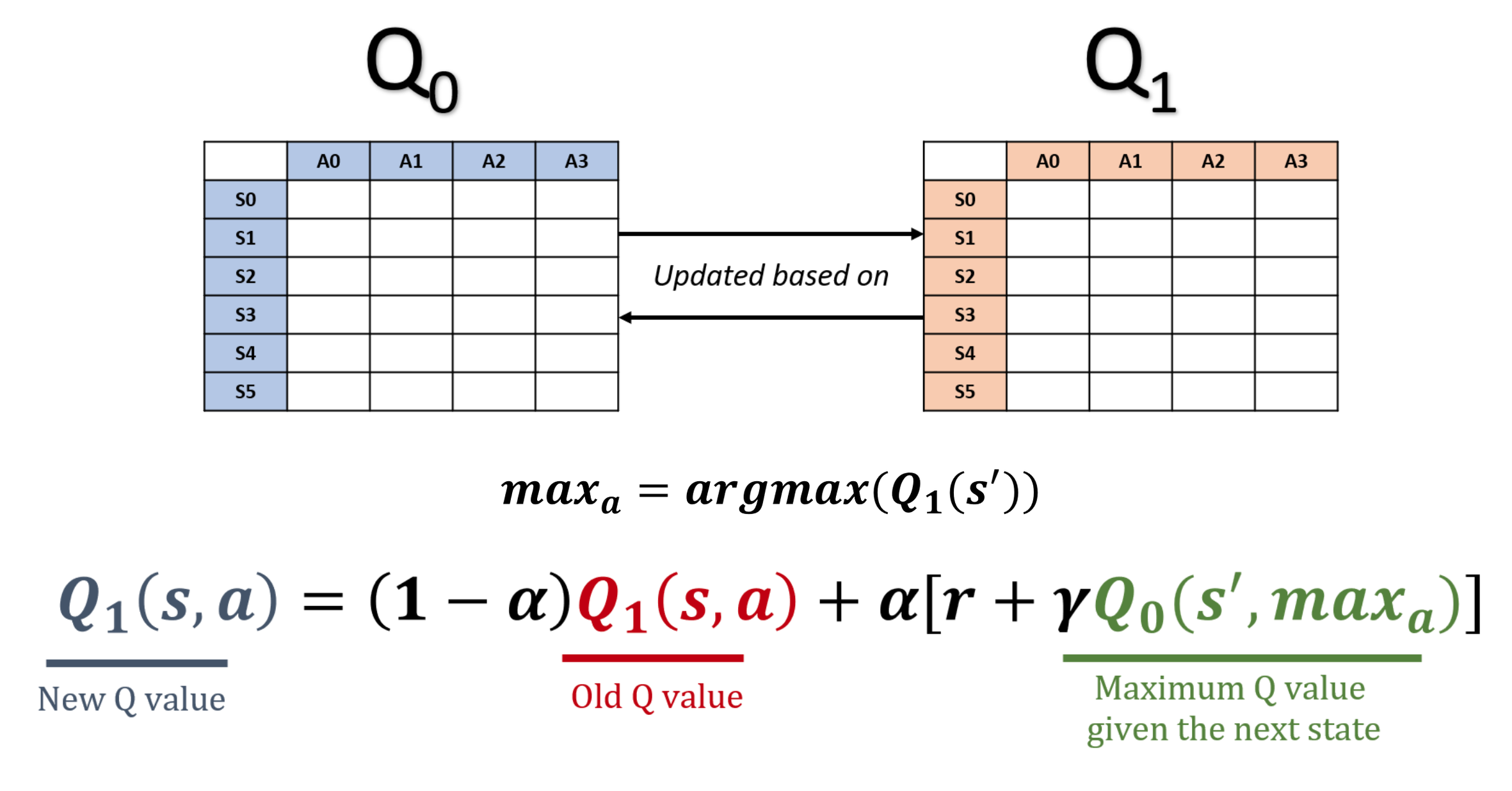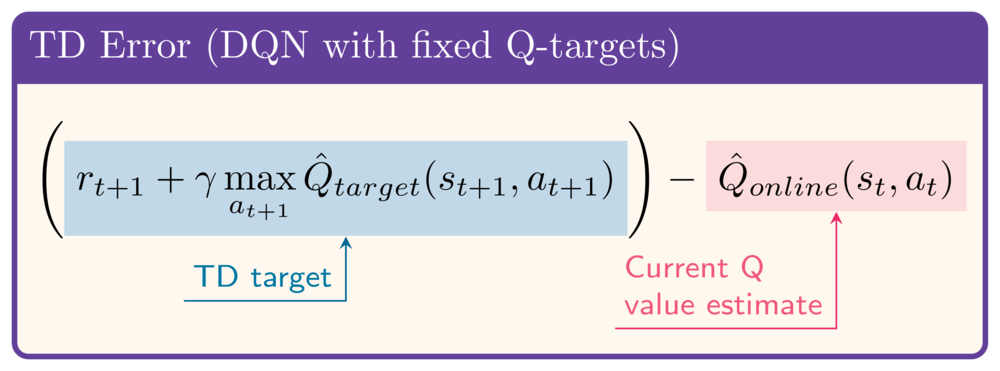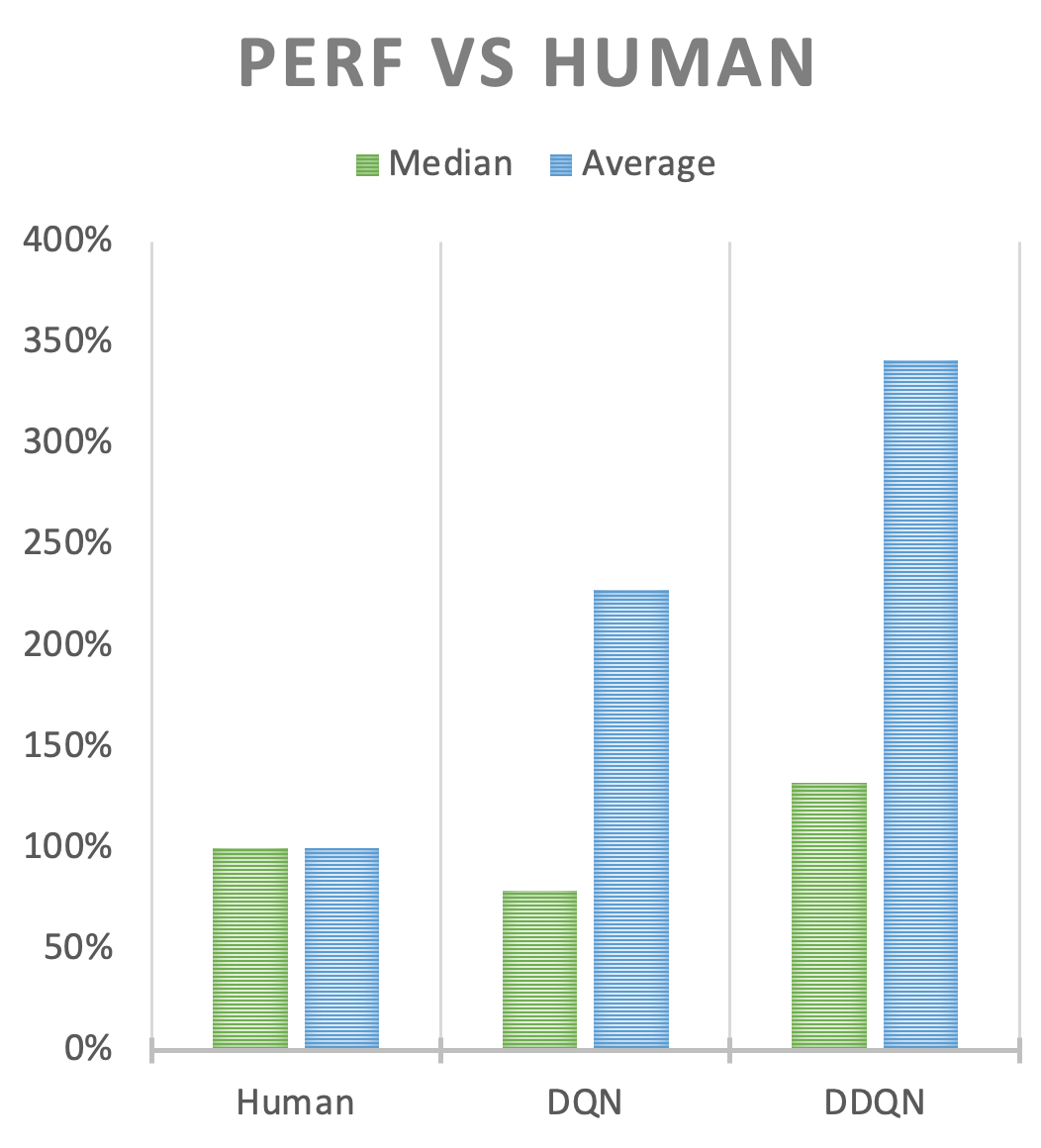Double DQN
Deep Reinforcement Learning in Python

Timothée Carayol
Principal Machine Learning Engineer, Komment
Double Q-learning
- Q-learning overestimates Q-values, compromising learning efficiency
- This is due to maximization bias
- Double Q-Learning eliminates bias by decoupling action selection and value estimation

The idea behind DDQN
- Start from complete DQN (with fixed Q-targets)
- In DQN TD target:
- Action selection: target network
- Value estimation: target network
- In DDQN TD target:
- Action selection: online network
- Value estimation: target network
- Not exactly double Q-learning (no alternating Q-networks)
- Most of the benefit, with minimal change


Double DQN implementation
DQN:
... # instantiate online and target networks q_values = (online_network(states) .gather(1, actions).squeeze(1))with torch.no_grad():# # next_q_values = (target_network(next_states) .amax(1))target_q_values = (rewards + gamma * next_q_values * (1 - dones))loss = torch.nn.MSELoss()(q_values, target_q_values) ... # gradient descent ... # target network update
DDQN:
... # instantiate online and target networks q_values = (online_network(states) .gather(1, actions).squeeze(1))with torch.no_grad():target_q_values = (rewards + gamma * next_q_values * (1 - dones))loss = torch.nn.MSELoss()(q_values, target_q_values) ... # gradient descent ... # target network update
Double DQN implementation
DQN:
... # instantiate online and target networks q_values = (online_network(states) .gather(1, actions).squeeze(1))with torch.no_grad():next_actions = (target_network(next_states) .argmax(1).unsqueeze(1))next_q_values = (target_network(next_states) .gather(1, next_actions).squeeze(1))target_q_values = (rewards + gamma * next_q_values * (1 - dones))loss = torch.nn.MSELoss()(q_values, target_q_values) ... # gradient descent ... # target network update
DDQN:
... # instantiate online and target networks q_values = (online_network(states) .gather(1, actions).squeeze(1))with torch.no_grad():next_actions = (online_network(next_states) .argmax(1).unsqueeze(1))next_q_values = (target_network(next_states) .gather(1, next_actions).squeeze(1))target_q_values = (rewards + gamma * next_q_values * (1 - dones))loss = torch.nn.MSELoss()(q_values, target_q_values) ... # gradient descent ... # target network update
DDQN performance
- Compare performance of DDQN, DQN and human players on Atari games
- DDQN: higher scores than original DQN
- May not always be true -> try both

1 https://arxiv.org/abs/2303.11634
Let's practice!
Deep Reinforcement Learning in Python

